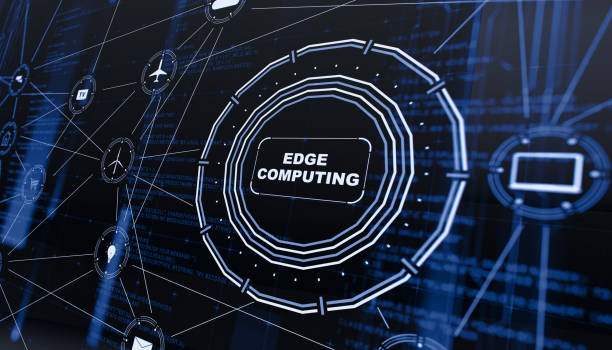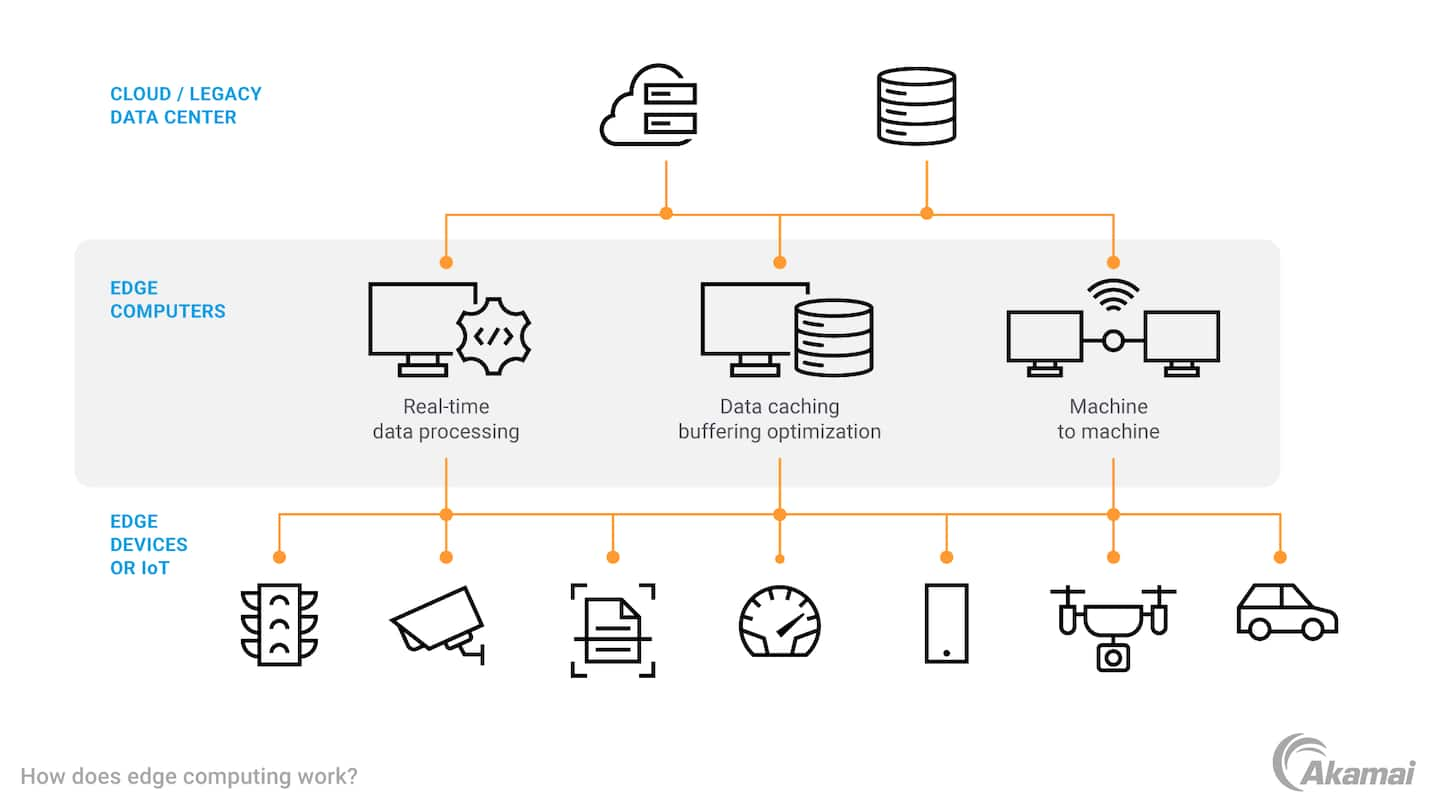🚀Exploring the Future: Edge Computing's Role in Web App Innovation
 Dipman Majumdar
Dipman MajumdarTable of contents
- 🌟 Introduction: The Need for Speed in Modern Web Apps
- ⚡ What is Edge Computing?
- 🔥 Benefits of Edge Computing in Web Development
- ☁️ Edge Computing vs. Traditional Cloud Computing
- 💡 Real-World Use Cases of Edge Computing in Web Apps
- 🛠️ How to Implement Edge Computing in Your Web Projects
- 🚀 Best Tools & Services for Edge Computing
- ⚠️ Challenges & Limitations of Edge Computing
- 🔮 Future of Edge Computing in Web Development
- 🎯 Conclusion: Should You Adopt Edge Computing?

🌟 Introduction: The Need for Speed in Modern Web Apps
In today's digital era, speed is everything. Whether you're streaming a video, playing an online game, or simply browsing a website, users expect instant responses. A delay of even 100 milliseconds can reduce conversion rates and lead to frustrated users.
But traditional cloud computing, where data is processed in centralized servers often located far from users, introduces latency. This is where Edge Computing changes the game!
Edge Computing allows web applications to process data closer to the user, improving performance, security, and scalability. In this blog, we’ll explore how edge computing is transforming web development and how you can leverage it for blazing-fast applications.
⚡ What is Edge Computing?
Edge Computing is a distributed computing paradigm that processes data closer to the source instead of relying solely on centralized cloud servers.
Instead of sending all data to a remote server, edge computing enables processing at the “edge” of the network—near the users or IoT devices. This reduces latency, improves speed, and ensures a smoother experience.
🛠️ How Edge Computing Works in Web Applications?
Here’s how it operates in a web development environment:
User Requests a Web Page → Instead of the request traveling all the way to a centralized cloud server, it's processed at a nearby edge server.
Edge Server Handles the Request → If cached data is available, the response is served immediately. If not, the edge server fetches data from the main cloud.
Faster Response → Users get the requested content much faster than traditional cloud processing.
This decentralized approach is crucial for modern applications that require real-time interactions, such as:
✅ Streaming Platforms (Netflix, YouTube)
✅ Online Gaming (Fortnite, Call of Duty)
✅ E-commerce Websites (Amazon, Shopify)
✅ IoT Devices (Smart Homes, Autonomous Vehicles)
🔥 Benefits of Edge Computing in Web Development
🚀 1. Reduced Latency & Faster Load Times
Since edge computing processes data closer to the user, latency is significantly reduced.
Websites load faster as requests don’t have to travel to a central cloud data center.
This is especially beneficial for applications that require real-time interactions, such as chat apps, live streaming, and gaming platforms.
🔄 2. Improved Reliability & Scalability
Distributed processing ensures that even if one edge server fails, another can take over, preventing downtime.
Unlike traditional cloud setups, where a single failure can affect a large region, edge computing reduces single points of failure.
🔐 3. Enhanced Security & Privacy
With edge computing, data is processed locally before reaching the central cloud, reducing the risk of cyberattacks.
Less data is transmitted over long distances, minimizing exposure to potential threats.
It’s particularly beneficial for IoT applications, where sensitive data (e.g., health records, surveillance footage) needs to be processed securely.
⚡ 4. Lower Bandwidth Costs
Since a large portion of the data is processed at the edge, less data needs to be sent to centralized cloud servers.
This reduces bandwidth costs, making it a cost-effective solution for businesses handling massive traffic.
🌍 5. Better User Experience for Global Audiences
Users from different parts of the world get a localized experience without major delays.
This is why companies like Netflix and YouTube use edge computing to serve content from the closest data center.
☁️ Edge Computing vs. Traditional Cloud Computing
| Feature | Traditional Cloud Computing | Edge Computing |
| Latency | High (data travels to remote servers) | Low (data is processed closer to the user) |
| Security | More vulnerable due to long-distance data travel | Improved security with localized data processing |
| Scalability | Can be expensive and requires central data centers | Scales easily with edge nodes worldwide |
| Bandwidth Cost | High due to heavy cloud reliance | Lower as edge handles processing |
| Best For | Centralized apps & storage-heavy platforms | Real-time apps, IoT, and interactive content |
💡 Real-World Use Cases of Edge Computing in Web Apps
Netflix & YouTube – Use edge servers to deliver high-quality video streams instantly.
Amazon & Shopify – Load product pages faster with edge caching.
Gaming Platforms (Fortnite, Stadia) – Reduce lag for online multiplayer games.
IoT (Self-Driving Cars, Smart Cities) – Process real-time sensor data locally.
🛠️ How to Implement Edge Computing in Your Web Projects
1️⃣ Use a CDN (Content Delivery Network)
🔹 Examples: Cloudflare, AWS CloudFront, Fastly
🔹 CDNs cache static files (CSS, JS, images) at multiple locations, reducing latency.
2️⃣ Deploy Edge Functions & Serverless Architecture
🔹 Examples: AWS Lambda@Edge, Cloudflare Workers, Vercel Edge Functions
🔹 Run code at the edge to execute dynamic operations without relying on a central backend.
3️⃣ Use Edge Databases
🔹 Examples: Cloudflare D1, PlanetScale, FaunaDB
🔹 Store and retrieve user data from edge locations for faster interactions.
4️⃣ AI & Machine Learning at the Edge
🔹 Train and deploy AI models closer to the user to improve response time.
🔹 Used in fraud detection, recommendation engines, and voice assistants.
🚀 Best Tools & Services for Edge Computing
Cloudflare Workers – Serverless functions at the edge.
AWS Lambda@Edge – Run functions close to users.
Fastly Compute@Edge – High-performance edge functions.
Google Cloud Edge TPU – AI processing at the edge.
⚠️ Challenges & Limitations of Edge Computing
Complex Implementation – Requires architectural changes.
Security Risks – More distributed points mean more potential attack vectors.
Data Synchronization Issues – Maintaining data consistency across multiple edge locations can be tricky.
🔮 Future of Edge Computing in Web Development
AI-powered Edge Processing – Smarter edge nodes will make real-time predictions.
5G & Edge Synergy – Faster mobile speeds will enhance edge computing benefits.
Edge Databases Will Become Standard – More apps will rely on edge data storage for speed.
🎯 Conclusion: Should You Adopt Edge Computing?
✅ If you’re building a web app that requires real-time processing, global scalability, and high performance, Edge Computing is the future.
With its ability to reduce latency, improve security, and lower costs, it's an essential technology for modern web developers. 🚀
Thanks for Reading!! 😊
Subscribe to my newsletter
Read articles from Dipman Majumdar directly inside your inbox. Subscribe to the newsletter, and don't miss out.
Written by


